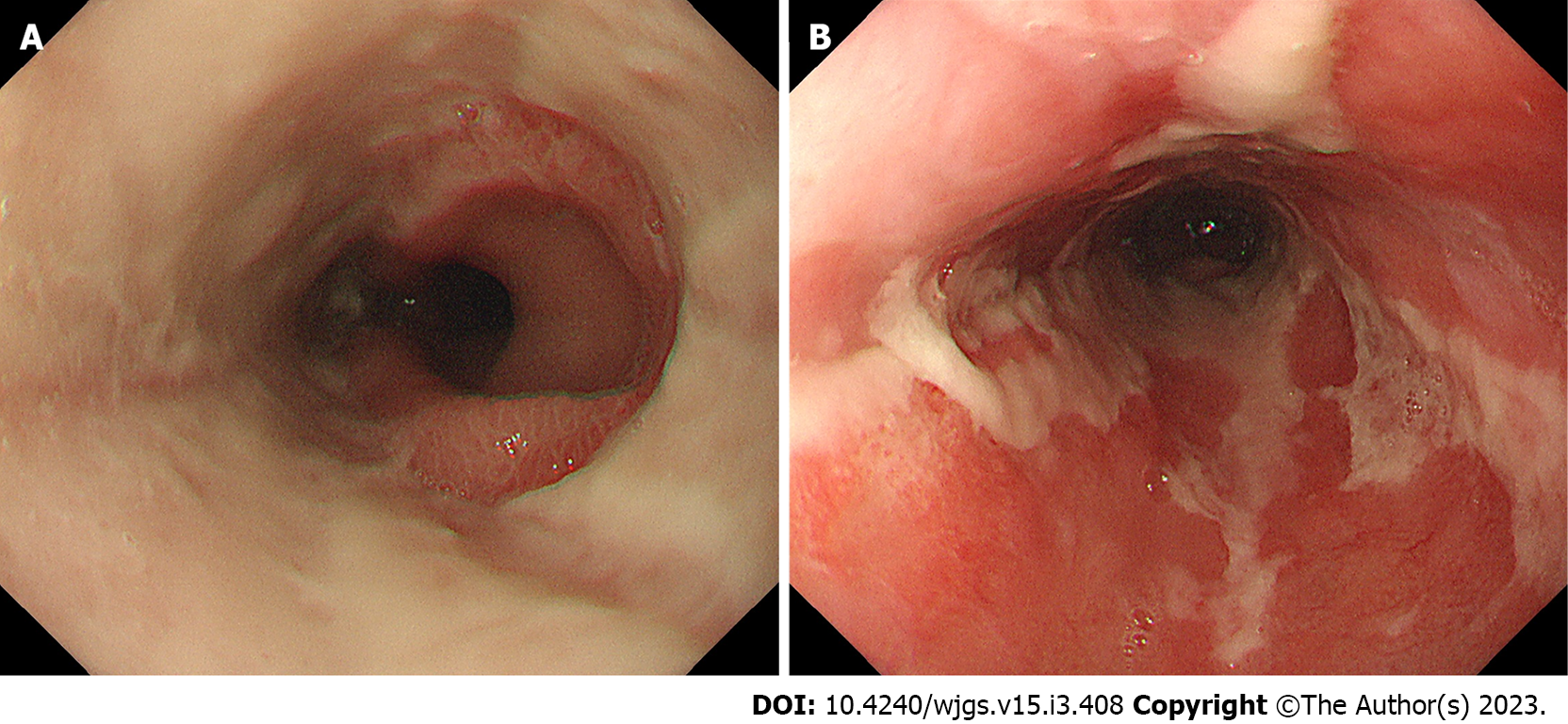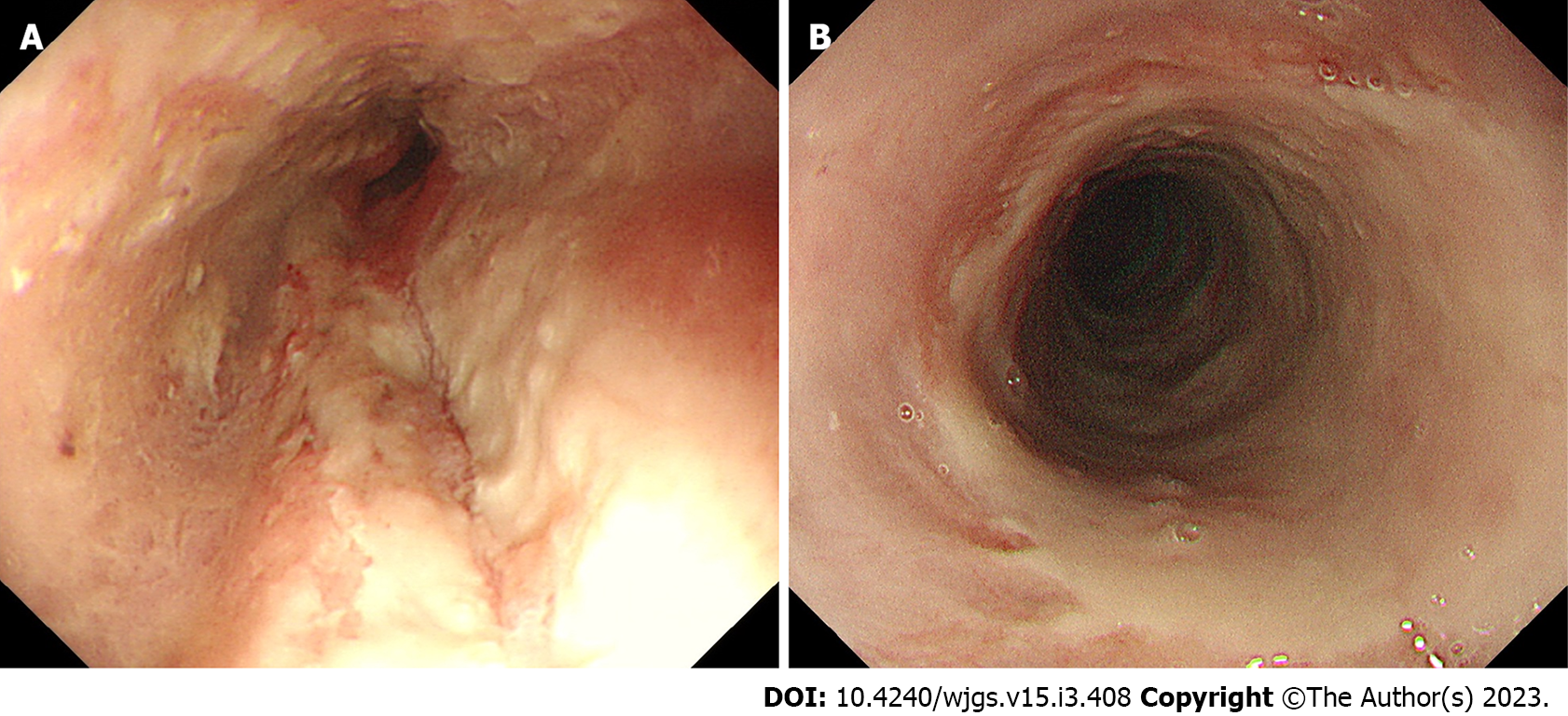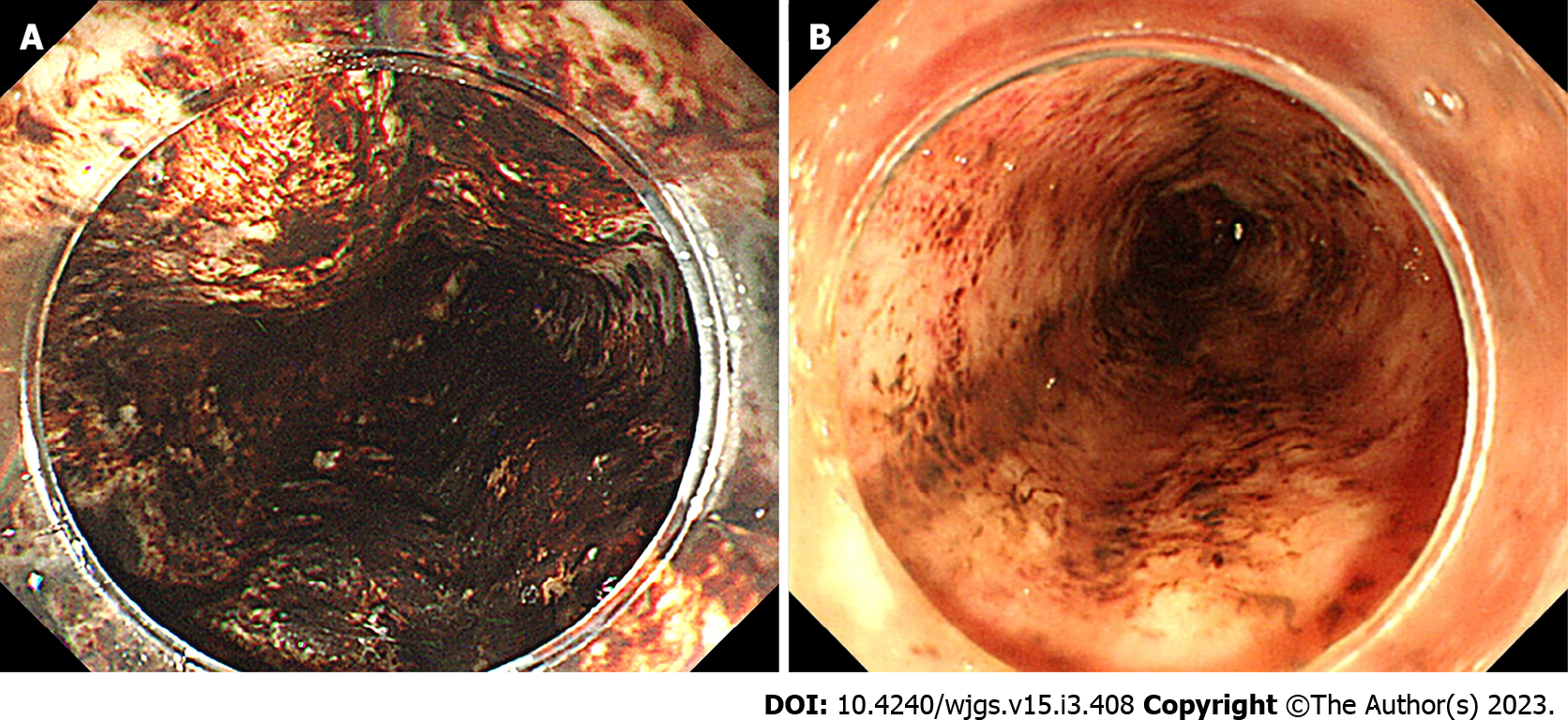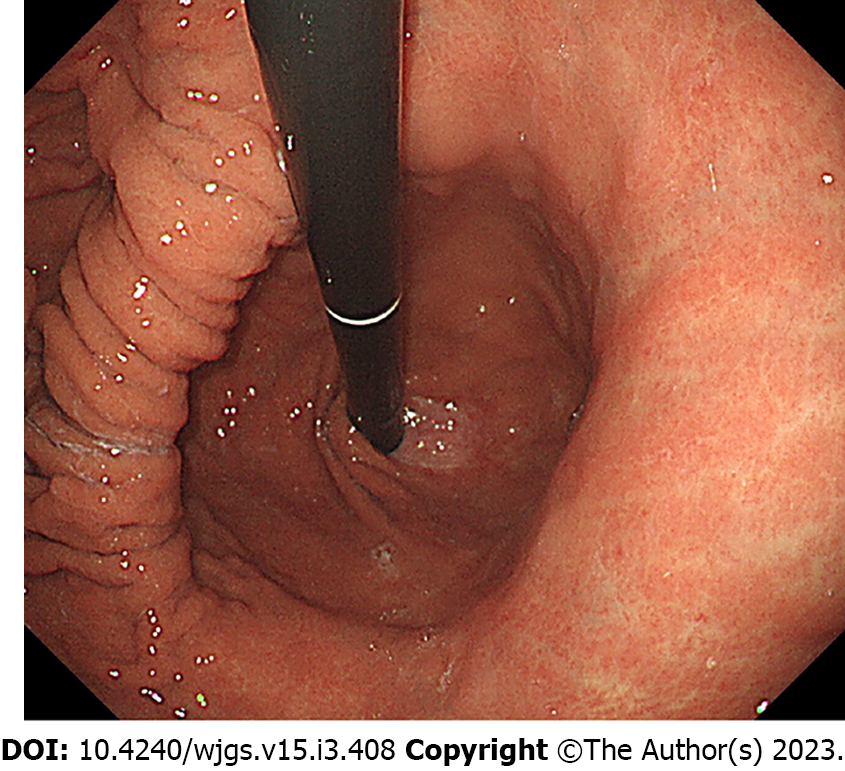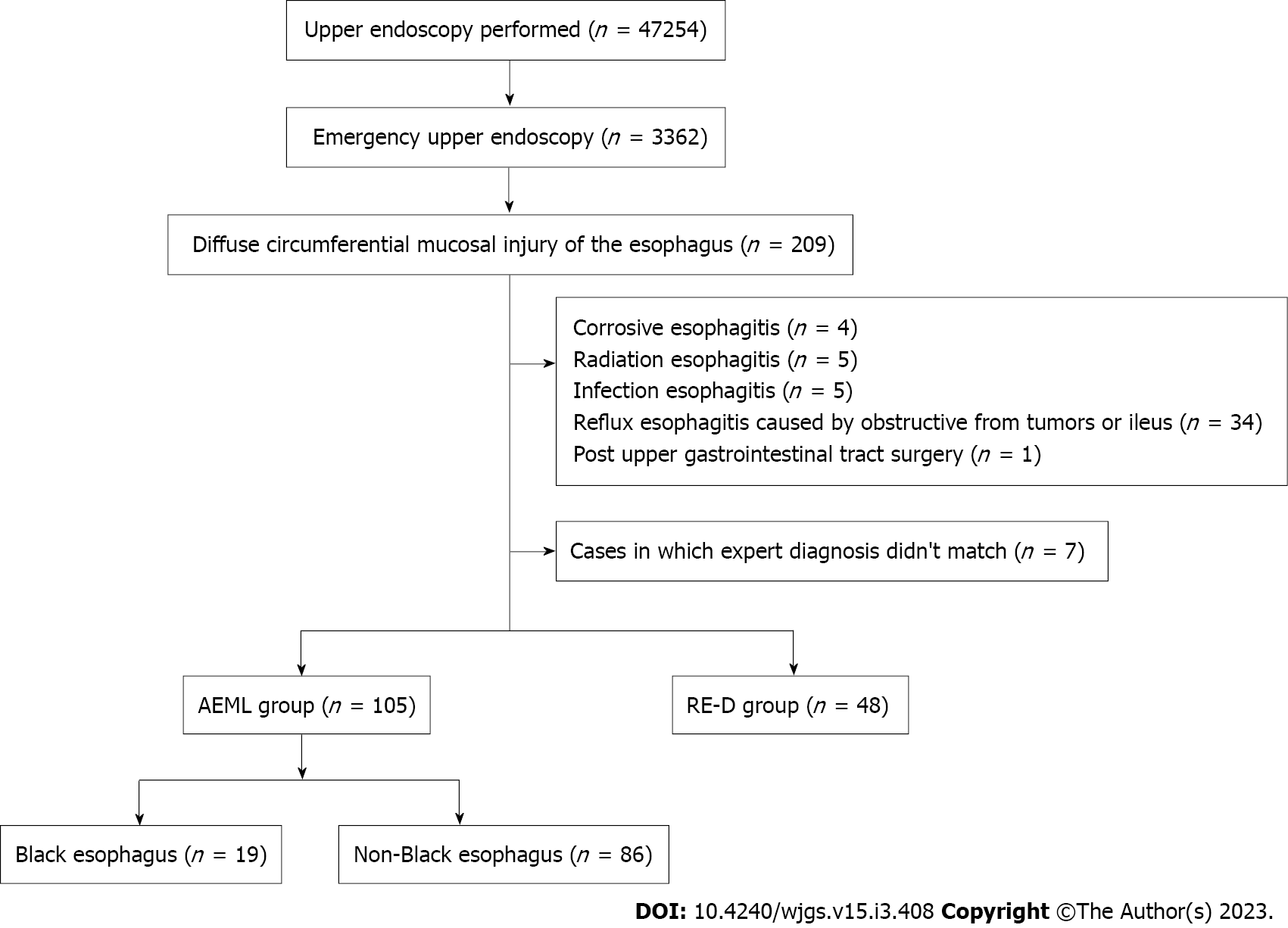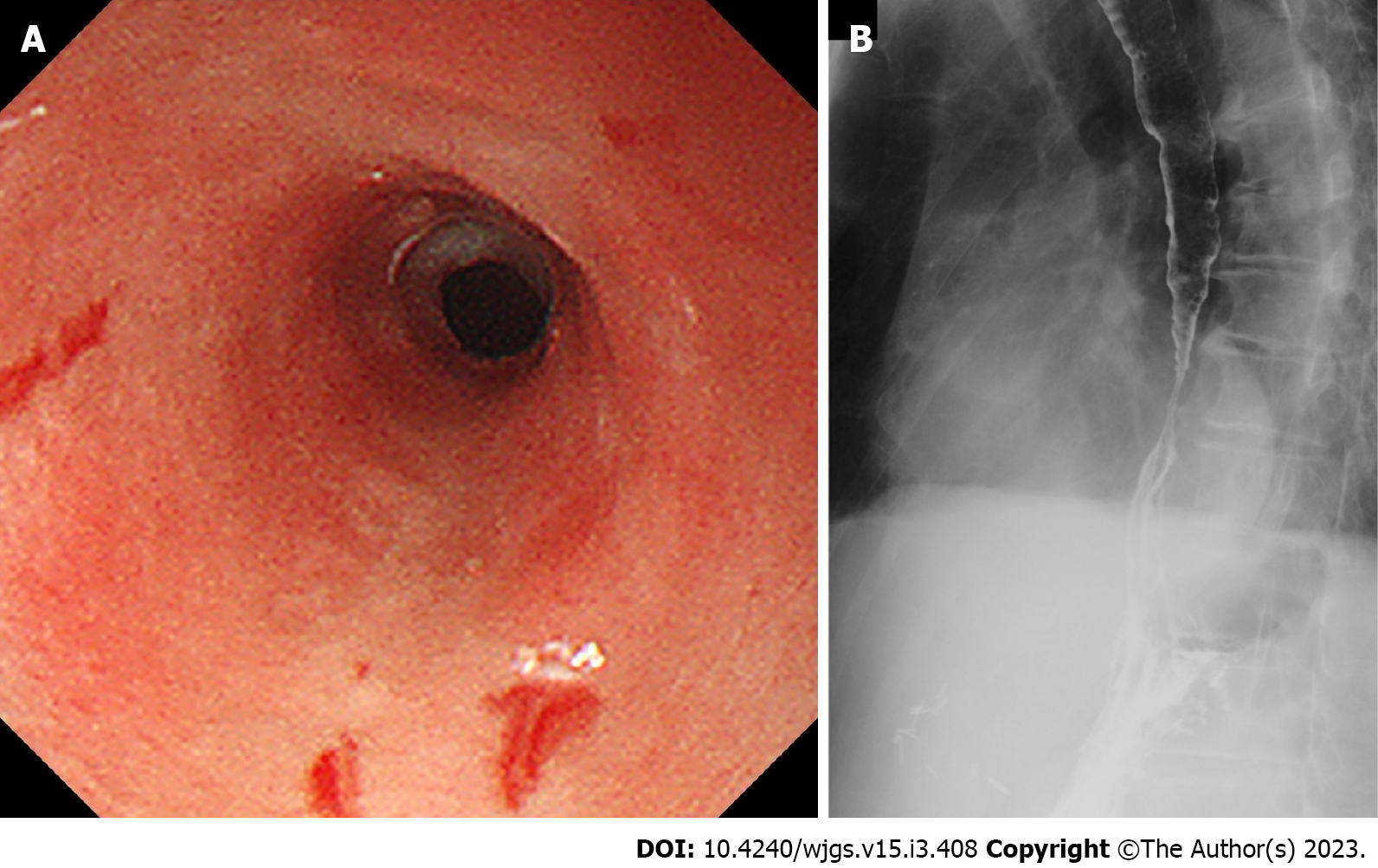Copyright
©The Author(s) 2023.
World J Gastrointest Surg. Mar 27, 2023; 15(3): 408-419
Published online Mar 27, 2023. doi: 10.4240/wjgs.v15.i3.408
Published online Mar 27, 2023. doi: 10.4240/wjgs.v15.i3.408
Figure 1 Visual definition of endoscopic findings regarding reflux esophagitis Los Angeles classification grade D.
A: In the lower esophagus; fused; the circumferential mucosal injury; B: Oral mucosal injury radially tapered off toward the oral side.
Figure 2 Visual definition of the endoscopic findings regarding the acute esophageal mucosal lesion.
A: In the lower esophagus; fused; the circumferential mucosal injury; B: Oral mucosal injury was not spiny-shaped.
Figure 3 Visual definition of endoscopic findings regarding black esophagus.
A: In the acute esophageal mucosal lesions group, black esophagus was defined as circumferentially appearing black esophageal mucosa; B: Even with a small amount of black component, we diagnosed black esophagus.
Figure 4 Visual definition of a hiatal hernia.
Esophageal hiatal hernia was defined as a widening of the hilum with two or more scopes in the retroflex view of the endoscope.
Figure 5 Flow diagram of patient inclusion and exclusion.
AEML: Acute esophageal mucosal lesions; RE-D: Reflux esophagitis Los Angeles classification grade D.
Figure 6 A case of esophageal stenosis.
A 75-year-old male patient developed non-black esophagus acute esophageal mucosal lesions during chemotherapy for colorectal cancer. The patient could not eat on the 27th day of onset. Upper endoscopy and esophagography showed esophageal stenosis. Symptoms improved after five endoscopic balloon dilatations. A: Upper endoscopy; B: Esophagography.
- Citation: Ichita C, Sasaki A, Shimizu S. Clinical features of acute esophageal mucosal lesions and reflux esophagitis Los Angeles classification grade D: A retrospective study. World J Gastrointest Surg 2023; 15(3): 408-419
- URL: https://www.wjgnet.com/1948-9366/full/v15/i3/408.htm
- DOI: https://dx.doi.org/10.4240/wjgs.v15.i3.408













